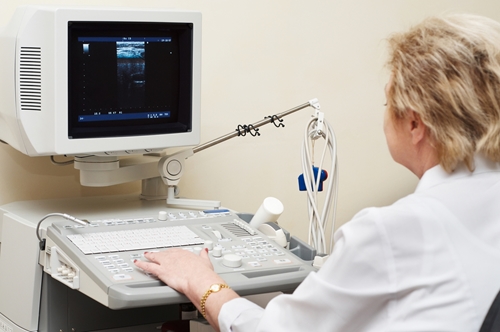For many doctors, medical imaging contributes in large part to diagnosing their patients. However, this testing is not always needed. Of the $2.8 trillion spent on health care annually, $7.47 billion to $11.95 billion is spent on unnecessary diagnostic imaging, according to a study by Peer60.
Fortunately, a new study in the American Journal of Managed Care described a way to cut down on excessive spending.
HIE eliminates redundancies
Health information exchange reduces the number of needless imaging by 25 percent, the study explained. EHR software contributes to the open sharing of patient information among health care providers, allowing doctors to bypass unnecessary testing. Instead of redoing diagnostic imaging, doctors can focus on other tests and treatments.
"So much patient information is spread across different practices, hospitals and health systems, that getting a comprehensive picture of the patient is difficult," the study's lead author, Joshua Vest, Ph.D. told HealthLeaders Media. "Health information exchange enables providers easier access to that information. We found that when a patient's information was accessed through the health information exchange, it was less likely that the patient would have a repeat imaging exam."
In the AJMC study, researchers found that 7.7 percent of medical imaging was repeated within 90 days. Approximately halfway through that time period, 50 percent of those tests were redone, while 80 percent were repeated by the 60-day mark. These numbers decreased by 25 percent when doctors accessed the HIE system within 90 days.
Causes of multiple exams
According to Peer60, while health care providers unfamiliar with the uses of medical imaging account for 60 percent of unnecessary testing, they are not the only reason. There are myriad factors that contribute to redundant exams. Defensive medicine (90 percent) and patient demand (65 percent) have also prompted doctors to perform diagnostic imaging without urgent need.
The implementation of HIEs and physicians' willingness to use them can reduce the $12 billion wasted on futile testing and ensure patients receive the treatments they need, according to HealthLeaders Media.
"A key factor for success is integrating the technology into clinical workflow," Vest told the source. "Several studies, ours included, have associated health information exchange usage with reductions in admission via the emergency department, reduced readmissions and reduced imaging. The key, however, is that the information needs to be accessed and used."
To cut down on redundancies in health care exams, medical professionals have to be willing and able to share and access EHRs via collaborative software. HIEs eliminate the need to redo tests that other doctors have already performed and allow physicians to focus more on how they can use that information to treat patients.
Contact Viztek for more information.
Ronny Bachrach
Latest posts by Ronny Bachrach (see all)
- Konica Minolta Debuts First-of-Its-Kind Digital U-Arm System at AHRA - July 27, 2016
- Researchers Detect Signs Of Stroke Risk Using MRI - June 27, 2016
- Imaging Biz: Q&A with David S. Channin MD: How to Make PACS Patient Centered - June 22, 2016










